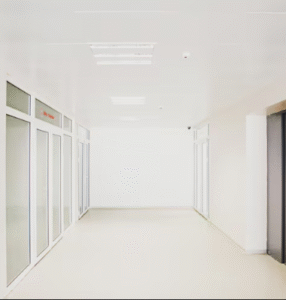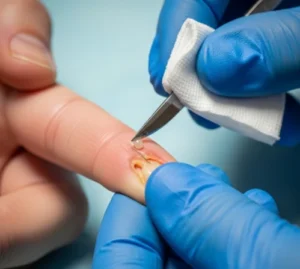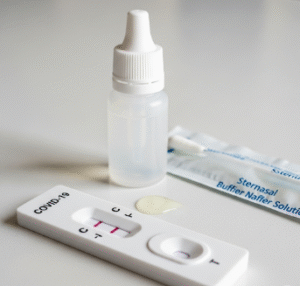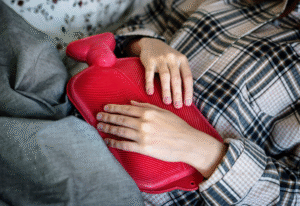What it is
Urinary incontinence is the involuntary leakage of urine, a common condition affecting women of all ages, especially after childbirth, menopause, or pelvic surgery. It occurs when the bladder muscles or pelvic floor are weakened, or when there is overactivity of the bladder.
Urinary incontinence treatment involves a range of medical, lifestyle, and surgical options aimed at restoring bladder control, improving quality of life, and preventing complications such as infections or skin irritation. In Korea, treatment combines modern medical technologies, advanced surgical techniques, and holistic rehabilitation programs.
➡️ Types of urinary incontinence:
- Stress incontinence: Leakage during coughing, sneezing, or exercise
- Urge incontinence: Sudden, strong urge to urinate followed by leakage
- Mixed incontinence: Combination of stress and urge types
- Overflow incontinence: Bladder does not empty fully, leading to dribbling
Why it’s done
Urinary incontinence may not be life-threatening, but it can have a serious impact on daily life, self-esteem, and social activities.
✔️ Reasons for treatment include:
- Preventing embarrassment and improving confidence
- Reducing risk of urinary tract infections and skin problems
- Restoring pelvic floor strength after childbirth or aging
- Supporting women’s overall reproductive and sexual health
✔️ Benefits of treatment:
- Improved bladder control and quality of life
- Non-invasive options available before surgery is considered
- Effective long-term solutions with advanced therapies in Korea
Alternatives
Depending on severity and cause, women may choose among conservative, medical, or surgical treatments.
🔹 Lifestyle changes (first-line option):
- Weight management and fluid intake regulation
- Bladder training and scheduled voiding
- Avoiding bladder irritants like caffeine and alcohol
🔹 Pelvic floor therapy:
- Kegel exercises, biofeedback, and electrical stimulation
- Strengthens muscles supporting the bladder
🔹 Medications:
- Anticholinergics or beta-3 agonists for urge incontinence
- Estrogen creams for postmenopausal women to strengthen tissues
🔹 Devices:
- Vaginal pessaries to support the bladder in cases of prolapse
- Urethral inserts for temporary leakage prevention
🔹 Surgical options (for severe cases):
- Sling procedures (support under the urethra)
- Bladder neck suspension surgery
- Artificial urinary sphincter implantation
Preparation
Proper preparation ensures effective and tailored treatment.
➡️ Medical preparation:
- Physical exam and medical history to identify cause
- Bladder diary (tracking fluid intake, urination frequency, and leakage)
- Urodynamic tests to measure bladder function
- Imaging or cystoscopy to rule out structural abnormalities
➡️ Personal preparation:
- Open discussion with healthcare provider about lifestyle and symptoms
- Willingness to try conservative approaches before surgery
- Preparing emotionally to commit to consistent therapy sessions
➡️ Mental preparation:
- Understanding that improvement is gradual
- Setting realistic expectations (some cases may require combined treatments)
- Counseling may help women coping with embarrassment or low confidence
How it’s done
Urinary incontinence treatment in Korea follows a step-by-step approach, starting with conservative methods and progressing to medical or surgical solutions if needed.
✔️ Step 1 – Conservative management
- Pelvic floor exercises guided by physiotherapists
- Bladder training programs to increase bladder capacity
- Lifestyle modifications (diet, hydration, weight management)
✔️ Step 2 – Medications
- Prescribed for urge incontinence to relax bladder muscles
- Topical estrogen therapy for menopausal women
✔️ Step 3 – Minimally invasive treatments
- Injections of bulking agents around urethra to reduce leakage
- Outpatient procedures with minimal downtime
✔️ Step 4 – Surgery
- Mid-urethral sling procedure: The most common surgery in Korea, placing a mesh or strip under the urethra for support
- Colposuspension: Lifting and securing bladder neck with sutures
- Artificial sphincter implantation: For severe, treatment-resistant cases
✔️ Duration:
- Non-surgical treatments may take weeks to months for results
- Surgeries usually completed in 1–2 hours, with recovery in days to weeks
Recovery
Recovery depends on the type of treatment used.
➡️ Immediate recovery:
- Mild discomfort after therapy or surgery
- Temporary restrictions on activity and sexual intercourse after surgical procedures
- Monitoring for infection or urinary retention
➡️ Physical recovery:
- Non-surgical therapies: gradual improvement within 6–12 weeks
- Surgical recovery: 2–6 weeks depending on procedure type
- Long-term success often achieved with combination of surgery and pelvic floor therapy
➡️ Emotional recovery:
- Relief from leakage improves confidence and social participation
- Counseling available in Korean hospitals for women struggling with emotional impact
➡️ Key recommendations:
- Consistency with exercises and bladder training
- Hydration and balanced nutrition to avoid constipation (which worsens symptoms)
- Attending follow-up visits to track progress and adjust treatments
Treatment option in Korea
Korea offers some of the most advanced and patient-centered urinary incontinence treatments worldwide.
✔️ Hospital facilities:
- Equipped with specialized women’s health and urology units
- Advanced diagnostic tools such as 3D ultrasound and urodynamic labs
- Modern operating theaters for sling and robotic surgeries
✔️ Medical expertise:
- Experienced gynecologists, urologists, and physiotherapists
- High success rates with minimally invasive sling procedures
- Personalized treatment combining Western medicine with rehabilitation approaches
✔️ Post-treatment care:
- Integration of pelvic floor therapy into recovery plans
- Counseling and lifestyle guidance to prevent recurrence
- Holistic recovery programs, including Sanhujoriwon-style postpartum centers offering incontinence care
✔️ Cultural aspect:
- In Korea, urinary incontinence is openly addressed as a common women’s health issue
- Hospitals focus on privacy, dignity, and long-term support
- Women are encouraged to seek early treatment rather than silently enduring symptoms
➡️ Highlight: Urinary incontinence treatment in Korea offers modern therapies, fertility- and lifestyle-focused care, and advanced surgical options, ensuring women regain confidence, comfort, and control in daily life.













